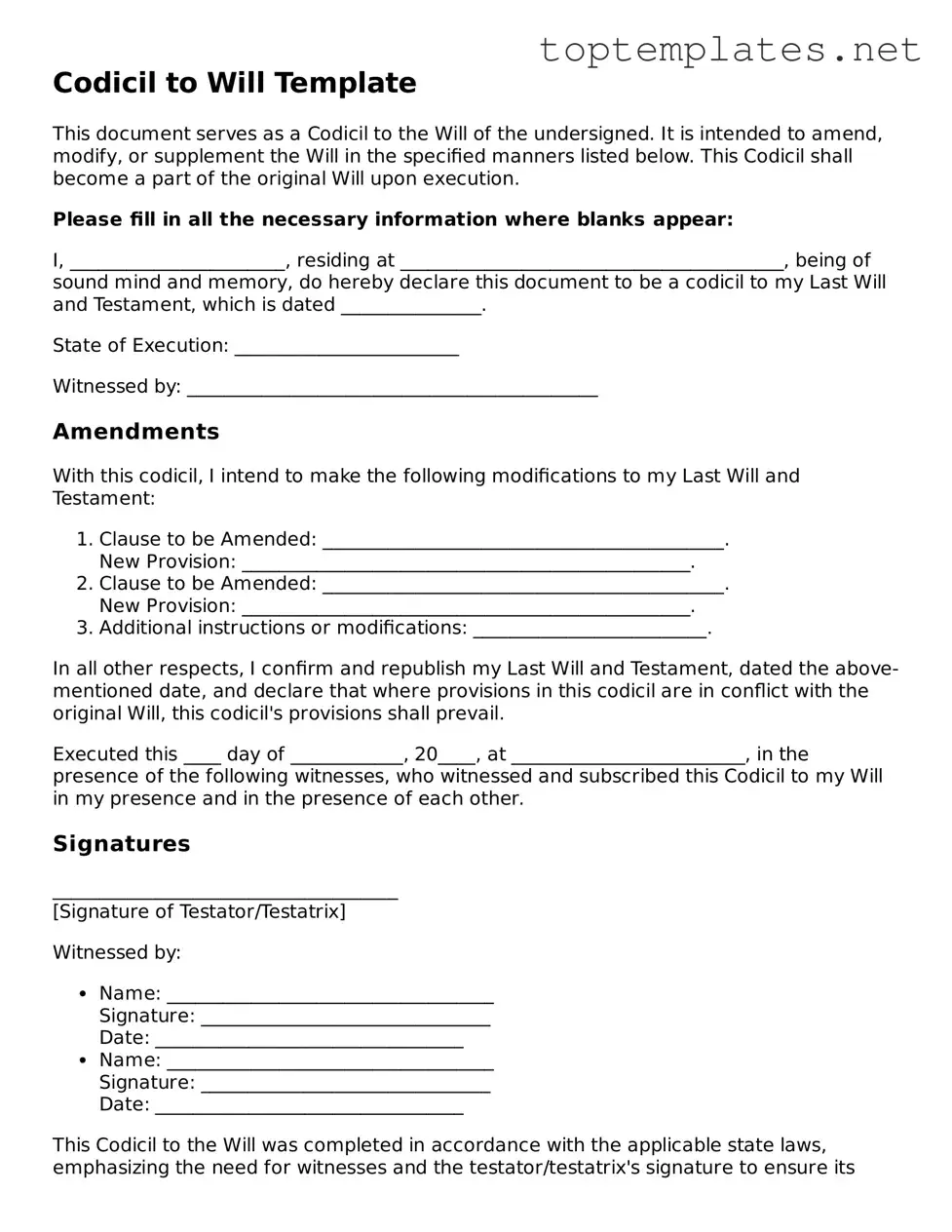What is a Codicil to Will form?
A Codicil to Will form is a legal document used to make modifications, additions, or deletions to an existing will without the need to draft a new will entirely. It allows the person creating the codicil (the testator) to adjust their estate planning documents to reflect changes in their life circumstances, assets, or wishes regarding beneficiaries.
When should I consider using a Codicil to Will?
You should consider using a Codicil to Will when you have minor changes to make to your existing will. This might include changing an executor, updating a beneficiary due to marriage, divorce, birth, or death, or adjusting specific bequests without altering the entire document.
Is a Codicil to Will legally binding?
Yes, a Codicil to Will is legally binding, provided it is executed in accordance with the laws of the state in which it is created. This typically includes requirements for the testator's signature, witnesses, and in some instances, notarization.
How many witnesses are required for a Codicil to Will?
The number of witnesses required for a Codicil to Will can vary by state. Most states require at least two disinterested witnesses (individuals who are not beneficiaries of the will) to sign the codicil, attesting that they observed the testator signing the document of their own free will.
Can a Codicil to Will be revoked?
Yes, a Codicil to Will can be revoked by the creator in several ways, including drafting a new codicil to replace the old one, creating a new will that overrides the previous will and any codicils, or physically destroying the document with the intent to revoke (e.g., tearing, burning, or shredding it).
How do I ensure my Codicil to Will is valid?
To ensure your Codicil to Will is valid, follow these steps: comply with state laws regarding witnessing and signature requirements, clearly specify the changes being made and which parts of the original will they affect, and make sure it is clearly identified as a codicil to a specific will, including the date of the original will.
Does a Codicil to Will need to be notarized?
The requirement for notarization of a Codicil to Will varies by state. While notarization is not always a legal necessity for the document to be valid, having it notarized can add a layer of authenticity and may assist in the probate process.
What should I avoid when creating a Codicil to Will?
When creating a Codicil to Will, avoid vague language, failing to address how the codicil amends the original will, and neglecting to adhere to legal requirements for execution. Also, avoid creating multiple codicils that may lead to confusion or conflict during the probate process.
Can I create a Codicil to Will by myself?
While it is possible to create a Codicil to Will by yourself, especially for straightforward changes, consulting with a legal professional can ensure that the document clearly reflects your intentions, adheres to state laws, and integrates seamlessly with your existing estate plan.
How is a Codicil to Will different from creating a new will?
A Codicil to Will is intended for minor modifications, additions, or deletions to an existing will, allowing the original will to largely remain in effect. Creating a new will is a comprehensive approach that entirely replaces any previous wills and codicils, suitable for more substantial changes to one's estate plan.
